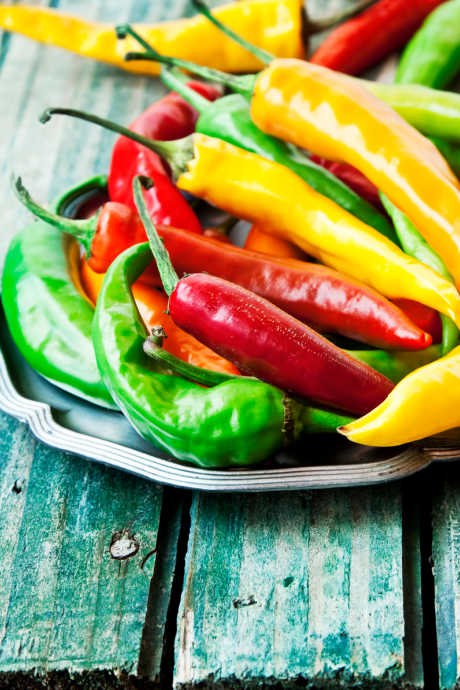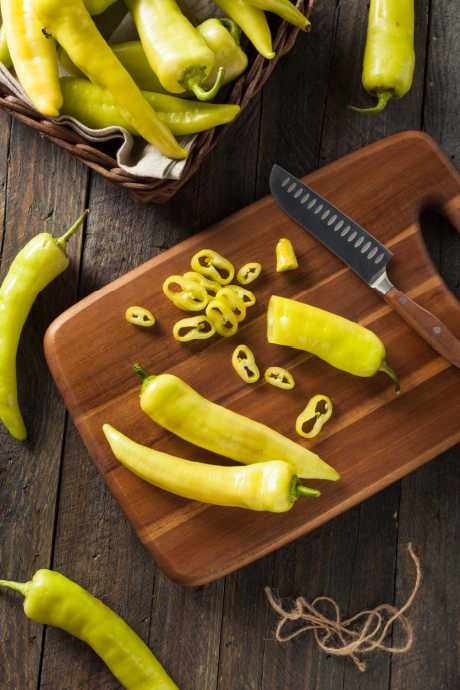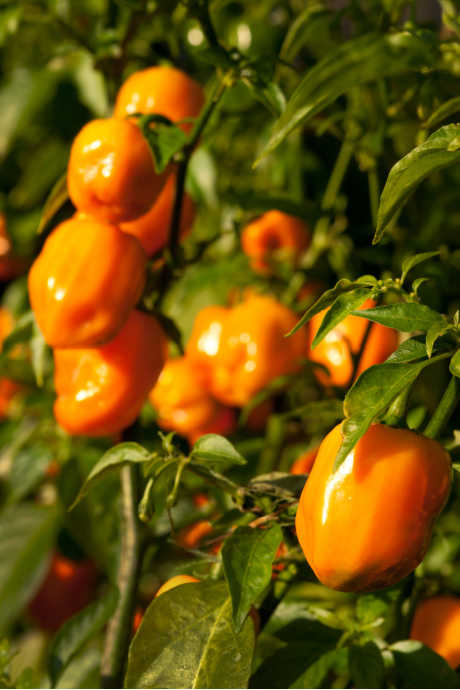Turn Up the Heat With Chile Peppers
Posted by Julie on Aug 12th 2020
There’s no denying chile peppers add spice to life, and to our meals too. Enjoy them raw or roasted, hot or mild, and from breakfast to dinner. You’ll find them in dishes from all over the world, and they’re grown as far as way as India or right here in the US. Learn more about how chile peppers have traveled far and wide, the official way to measure their relative heat, and ten types of peppers everyone should know.
Origin of Chile Peppers
While the world’s hottest pepper hails from the US, chiles first began growing wild in Brazil. Capsaicin, which is responsible for peppers’ heat, makes chile peppers unappetizing to mammals. However, birds can’t taste capsaicin, so they do eat peppers and excrete the seeds, spreading them to other locations where they can sprout and grow into new pepper plants.
As humans began to explore the world, they also brought chile peppers to new locations. Christopher Columbus took them back to Europe, where they spread across the continent and into Asia. It’s unknown how they spread to the US, whether via Mexican Indians or other European explorers, but chile peppers have been a staple of the American southwest for centuries.
Hot or Not: The Scoville Scale
Some chile peppers pack almost no heat, and other varieties will practically set your mouth aflame. But how do you know which peppers are best suited to your taste? The Scoville scale is the standard way of measuring the heat of chile peppers. Scientist Wilbur Scoville created the scale in the early 1900’s using a rudimentary taste-testing method based on diluting ground peppers with water. Modern Scoville scale measurements are done using liquid chromatography to measure capsaicin, but heat is still specified in terms of Scoville Heat Units, or SHU.

Chile peppers range anywhere from 0 SHU, meaning they have no capsaicin at all, to over one million SHU. We found this exhaustive list on Chili Pepper Madness, along with lists divided according to heat: sweet and mild, medium, medium-hot, hot, and super-hot. It’s a great resource for comparing peppers and getting a sense of how each one tastes. They also feature recipes and suggestions for buying each type of pepper, or seeds for growing your own.
Chile Pepper Caution
Smaller chile pepper varieties are usually hotter than larger ones, and most of the heat is contained in the core and ribs. Trim those away and discard the seeds to tone down the heat. But how can you tell how hot a pepper might be, apart from its variety? What’s Cooking America offers this helpful guidance: “If you are searching for milder chiles, always select ones that have broad shoulders and blunt tips. For hotter chile peppers, select chiles with pointed tips and narrow shoulders.”
The capsaicin will transfer to your hands as you prepare chile peppers, and if you touch your face or eyes before washing thoroughly, you’ll feel the burn. To be extra cautious, rub your hands with oil or shortening before working with peppers, or even try wearing rubber or latex gloves. Be sure to wash your prep tools too, either by hand or in the dishwasher, to remove any traces of capsaicin.
10 Common Chile Peppers
Tens of thousands of pepper varieties exist, but we’re going to highlight ten of the most well-known. We’ll cover them in order of heat, from the ultra-mild bell pepper to the record-setting Carolina Reaper.
Bell (0 SHU)
Bell peppers have zero capsaicin; they are mild in flavor, and their sweetness increases as they ripen from green to yellow, orange, and red. Roast them, grill them, bake them, or eat them raw in salads or as a snack. Don’t worry about any residual heat lingering on your hands or prep tools.
Banana (1-500 SHU)

Banana peppers contain minimal capsaicin. They are still a mild pepper, despite having a dash of heat. Add them to salads and sandwiches, or use them to top pizzas. They add flavor without being overpowering.
Anaheim (500-2500 SHU)
While the name comes from the city in California, Anaheim chiles are also grown in New Mexico and may be called New Mexico chiles. The capsaicin level varies, but they are generally mild. Grill or roast fresh green Anaheim chiles, or use dried red ones for added heat.
Poblano (1000-2000 SHU)
Poblano chiles are named after their city of origin: Puebla, Mexico. They’re the pepper of choice for making chile rellenos. Fresh green Poblano chiles are often roasted or stuffed, and dried red ones are known as Ancho chiles.
Jalapeño (2500-8000 SHU)

Surprised to see jalapeños this high up in our list? They’re not as hot as you might think. Fresh green jalapeño chiles are delicious when roasted, grilled, or raw. Add them to salsa or guacamole, and use them to top nachos or pizzas. Fresh green jalapeños can be allowed to ripen to red, and dried red jalapeños are known as Chipotle chiles.
Serrano (10,000-20,000 SHU)
Serrano chiles are a step up from Jalapeños in terms of heat, though their underlying flavor is similar. If you find jalapeños aren’t hot enough for your taste, you can substitute Serrano chiles. Just remember that Serrano chiles are somewhat smaller than jalapeños, and don’t mix them up when preparing dishes, as the difference in heat isn’t negligible.
Cayenne (30,000-50,000 SHU)
You probably know this pepper best in its powdered form, though Cayenne pepper does come from an actual chile pepper. Fresh Cayenne chiles are long, thin, red peppers, and they pack quite a bit of heat.
Habanero (100,000-350,000 SHU)

Turn on the air conditioner and pour a glass of milk before biting into a Habanero chile. This pepper isn’t for the faint of heart. Twenty years ago, the Habanero topped all other chile peppers in terms of heat. They’re grown in Mexico’s Yucatan peninsula and typically eaten when orange. You can find Habaneros at most grocery stores.
Ghost (855,000-over 1 million SHU)
Ghost chile peppers come from India, and the mildest ghost peppers are twice as hot as the hottest Habaneros. We were fascinated to learn these peppers aren’t just popular in Indian dishes; they’re also an effective means of deterring animals from human areas and even re-routing elephant migrations.
Carolina Reaper (1,500,000-over 2,200,000 SHU)
Believe it or not, the official hottest pepper in the world comes from the US. The Carolina Reaper comes in at over two million SHU, or twice as hot as a ghost pepper. Hot sauces are made from this tiny red pepper, or you can order dried Carolina Reapers to make your own sauce.
 Free shipping over $49
Free shipping over $49










